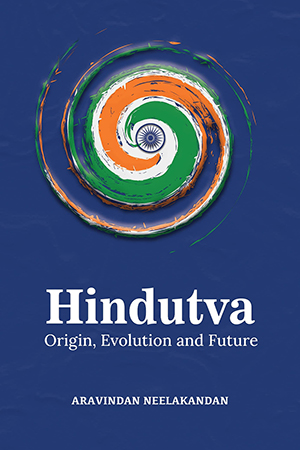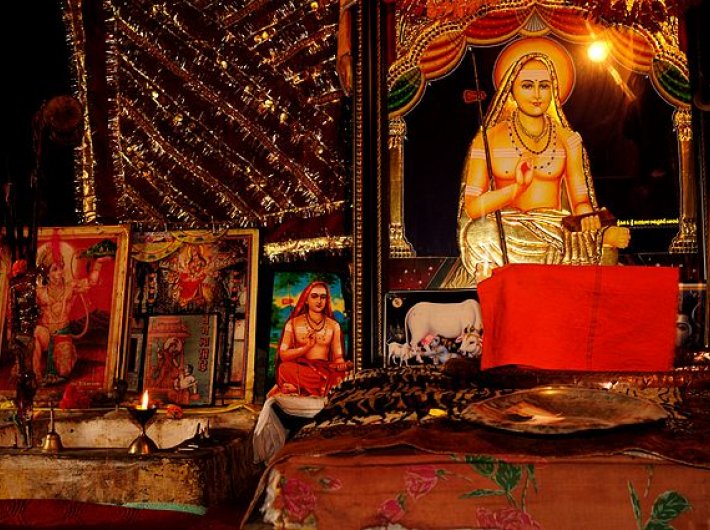An excerpt from Aravindan Neelakandan’s ‘Hindutva: Origin, Evolution, and Future’
Aravindan Neelakandan has come out with a new work, ‘Hindutva: Origin, Evolution, and Future’ (Kali Imprint; BluOne Ink), which promises to be a must-read for understanding Hindutva not just as a political movement but also as a cultural and social one.
The book, released on December 2, studies Hindutva in both critical and holistic terms—an approach that is oft found missing in most studies on Hindutva, where a lot of critical knowledge has been left out either intentionally or out of ignorance. This omission has led to characterize Hindutva as a dangerous exclusivist majoritarian supremacist ideology. Hindutva is often studied like other extreme right-wing ideologies. However, the thesis presented in this book is built on the strong foundation that Hindutva is not an ideology but a historical-civilizational process. As such, it does not fit the expectations of any ideological framework.
Neelakandan has worked for more than a decade with the Natural Resources Development Project of Vivekananda Kendra (VK-NARDEP). He has authored books on sustainable agricultural technologies and traditional knowledge systems in Tamizh. He has co-authored Breaking India with Rajiv Malhotra.
Here is an excerpt from the deeply researched, provocative and comprehensive book :
Samanvaya —an Integral Part of Hindutva
 It is not only in the realms of high philosophy and royal history that the harmonization process worked. It equally worked in the folk traditions and popular culture of India throughout the ages. Thus, in the popular story of Adi Sankara, it is said that when Adi Sankara defeated the famous Jain scholar Amarasimha, the latter became so dejected that he started burning his own works. When he came to know of this, Adi Sankara went and prevented him from burning any further of his scholarly works, and thus we got the famous Sanskrit thesaurus Amarakosha.
It is not only in the realms of high philosophy and royal history that the harmonization process worked. It equally worked in the folk traditions and popular culture of India throughout the ages. Thus, in the popular story of Adi Sankara, it is said that when Adi Sankara defeated the famous Jain scholar Amarasimha, the latter became so dejected that he started burning his own works. When he came to know of this, Adi Sankara went and prevented him from burning any further of his scholarly works, and thus we got the famous Sanskrit thesaurus Amarakosha.
A similar story is also told about the emperor Shalivahana. The emperor, originally hailing from a family of potters, was humiliated when the Naga princess he had married exclaimed playfully in Sanskrit and the king could not comprehend what she had said. So, when he set forth to study Sanskrit very quickly, his minister Gunadya told him that it would take him a minimum of 12 years while another minister, Sarvavarma, was confident of making the king an expert in six months. The infuriated Gunadya stated that he would cease speaking in Sanskrit if that happened. And that is exactly what happened. Gunadya left the emperor’s court and vanished.
Later the emperor had tribal visitors who offered him a classic Brihatkatha written in their language Paishacha. Shalivahana considered Paishacha an uncivilized language and hence refused. Soon after this, the emperor fell ill from eating inferior meat, and inquiries revealed that the animals in the forest literally starved, captivated by the music of the guru of the tribals. So Shalivahana went to the forest himself to witness this phenomenon. There he saw that it was Gunadya singing his Paishachic Brihatkatha and burning the palm leaves with verses written on them one by one. Regretting his error, the emperor prevented further burning and returned to his capital with his minister and the Paishachic classic.
These traditions, both oral and classic, have layers of meaning and show how samanvaya works not just in the realms of religion and philosophy but also in the realm of linguistic diversity. One, it shows that contrary to the myth built around it, Sanskrit is not very hard to learn. Then it subtly criticizes the vanity that may come with the learning of Sanskrit, which was the cultural lingua franca of classical India. Further, it shows the beauty of a supposedly crude tribal language and elevates it to a sublime height. It underlines the duty of those in authority to nourish linguistic diversity. The result has been that Sanskrit itself has evolved more as a pervading matrix absorbing local linguistic substrata in its course rather than imposing itself as an annihilator of local linguistic diversity. Folk tales similar to the one about Shalivahana exist throughout India in almost all local languages.
The process of samanvaya has never ceased in Indian history. In the seventeenth century, the ninth Sikh Guru Tegh Bahadur had campaigned against the tantric traditions in Assam and related regions. Probably they had degenerated. But within the next generation, the harmonization had brought together again the Shaktic and the core Vaishnavism of the Sikh Panth together when the 10th Sikh Guru Gobind Singh wrote Chandi di Var (a martial ballad of the Goddess battling the demons based on the Markandeya Purana) with the advent of the Khalsa movement.
The fierce Hindu resistance to Islamic invasions is just one side of Indian history. Underneath, the Indic matrix was also working on Islam and harmonizing it. When Abul Fazal’s ‘Akbar Nama’ had Akbar confess regretfully that he had ‘forced many Brahmins by fear of power to adopt Islam’, it was indeed a significant moment for the process of samanvaya triumphing over the monocultural expansionist tendencies. Akbar went on to say that he had done such proselytization when his mind was not enlightened. Despite the regressive movement during Aurangzeb’s reign, samanvaya reached its zenith in the immortal works of Dara Shukoh, the martyred elder brother of Aurangzeb.
The importance of Dara Shukoh in the process of samanvaya has not yet been studied and realized to its full potential. From the condescending admission of Amir Khusrau that Hindus did have some correct beliefs, which, in turn, stemmed from rigid Islamist theological framework, the point reached by Shukoh is amazingly universal.
In his introduction to the Persian translation of the Upanishads (Sirri-Akbar, The Greatest Secret), Shukoh reveals his religious philosophy. He compares the different world scriptures—the Vedas, the Upanishads, the Hebrew and Christian Bibles (Taurat and Injil) as well as the Psalms (Zabur). He declares that the degree of clarity and intelligibility in them is not uniform. He states that the content of the Koran is allegorical. Then he goes on to do the unthinkable. He contends that the Upanishads are the Koran in a protected book—Kitab Maknun—a reserved term in the Islamic theological world that refers to the original form of the Koran inscribed by Allah himself. Thus, for Dara Shukoh, the Upanishads stand as a holy text by themselves, but to understand the real meaning of the Koran, Muslims have to study the Upanishads. Elsewhere, the prince had also considered the idol worship of Hindus positively. According to him, a concrete representation of a deity was essential till one gets the inner meaning of religion.12 This shall be dealt in detail under the section on Islam.
The martyrdom of Shukoh would not go waste as demonstrated by another martyr Ashfaqulla Khan, who when asked by the British why he was fighting for the freedom of Hindustan despite being a Muslim, he replied that he preferred his Hindu brothers over British colonialism. The spirit of Shukoh still lives vibrantly in India through the dialogues of the popular TV series Mahabharata, written by Rahi Mazoom Raza, which struck a chord with the entire nation in the late 1980s as they sat glued to their television screens every Sunday morning while the show was telecast.
[The excerpt is reproduced with the permission of the publishers.]
